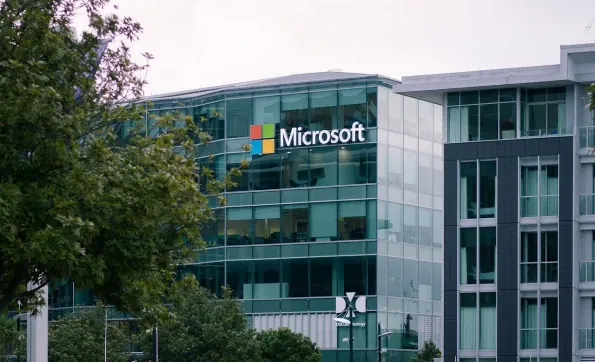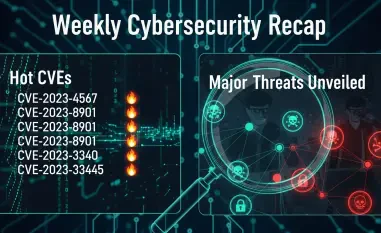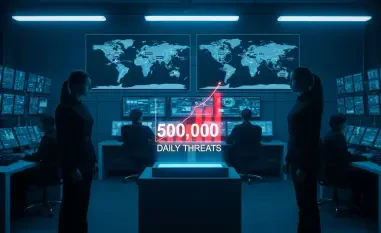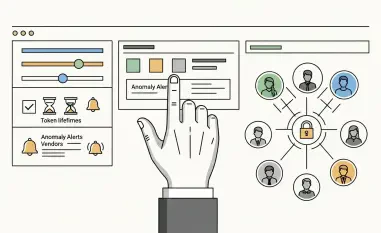Microsoft’s December 2024 Patch Tuesday updates have been released, addressing a total of 71 vulnerabilities. Among these, 16 are marked as critical, and one zero-day vulnerability affecting the Windows Common Log File System (CLFS) has been actively exploited in the wild. This article provides an in-depth analysis of these updates, highlighting the most critical vulnerabilities and offering mitigation strategies.
Overview of December 2024 Patch Tuesday
The December 2024 Patch Tuesday from Microsoft introduces a comprehensive set of updates targeting various products, reflecting an overarching effort to bolster security measures. This month has seen security updates addressing 71 vulnerabilities, with a significant portion of them pertinent to Microsoft Windows. Specifically, 58 patches were aimed at Windows, highlighting its criticality in the enterprise landscape. Additionally, 27 patches were issued for Extended Security Update (ESU) programs, and 10 for Microsoft Office, underscoring the diverse array of products requiring attention.
Among the different types of exploitation techniques observable this month, remote code execution (RCE) vulnerabilities stood out, constituting 42% of the updates, while elevation of privilege vulnerabilities accounted for 38%. Remote Code Execution allows attackers to execute arbitrary code on a targeted system remotely and therefore poses severe security risks. Elevation of privilege vulnerabilities, on the other hand, allow attackers to obtain unauthorized access to higher-level privileges on an affected system. These categories of vulnerabilities underscore the need for robust security practices and vigilant monitoring by organizations to thwart potential exploitation.
Zero-Day Vulnerability: CVE-2024-49138
In a noteworthy revelation, CrowdStrike’s Counter Adversary Operations’ Advanced Research Team uncovered a zero-day vulnerability, CVE-2024-49138, affecting the Windows Common Log File System (CLFS) driver. This critical vulnerability, rated with a CVSS score of 7.8, is identified as a privilege escalation issue, which has been actively exploited in the wild. Privilege escalation vulnerabilities enable attackers to gain elevated access to system resources that are normally protected from an unprivileged user.
The CVE-2024-49138 vulnerability within CLFS highlights the perpetual threat landscape and the continual efforts required to detect and neutralize such exploits. Upon discovery, CrowdStrike promptly reported this vulnerability to Microsoft, leading to its recognition, patching, and an official advisory issued to mitigate potential risks. The active exploitation of such vulnerabilities in the wild underscores the growing sophistication of adversarial tactics and the imperative need for timely updates and patches to safeguard systems. Organizations are strongly urged to apply these patches immediately to mitigate potential threats and prevent exploitation.
Critical Vulnerabilities in Lightweight Directory Access Protocol (LDAP) Client
CVE-2024-49112
The update includes addressing a critical Remote Code Execution vulnerability, CVE-2024-49112, impacting the Windows Lightweight Directory Access Protocol (LDAP) client. Rated with a high CVSS score of 9.8, this vulnerability allows unprivileged attackers to execute arbitrary code on an Active Directory server merely by sending specially crafted LDAP calls. Such a vulnerability, if left unpatched, poses a severe risk, given its potential to compromise directory services crucial for network administration and authentication.
Microsoft strongly advises mitigating measures in addition to applying patches. One key recommendation is configuring Active Directory servers to not accept Remote Procedure Calls (RPCs) from untrusted networks. This defensive stance helps limit the attack surface, thereby reducing the likelihood of successful exploitation. Implementing this alongside the patch ensures that even if initial attempts at exploitation occur, subsequent malicious actions can be hampered, minimizing the overall impact on the system.
CVE-2024-49124 and CVE-2024-49127
Similarly, the patch update addresses two other critical RCE vulnerabilities within the LDAP client, identified as CVE-2024-49124 and CVE-2024-49127, both having a CVSS score of 8.1. CVE-2024-49124 can be exploited by an unauthenticated remote attacker using a specially crafted packet to manipulate a cryptographic protocol within Windows Kerberos, thereby achieving arbitrary code execution. Windows Kerberos is instrumental in authenticating users and securing communications, and vulnerabilities within it can lead to severe security breaches.
CVE-2024-49127, on the other hand, requires an attacker to win a race condition by sending a specifically crafted request to a vulnerable server, consequently enabling code execution in the SYSTEM account. Race condition vulnerabilities exploit timing issues, where the system’s predictable state changes could be manipulated by attackers to gain unauthorized access. The presence of such vulnerabilities underscores the need for multilayered security defenses and early detection mechanisms to preemptively address exploitation.
Critical Vulnerability in Windows Hyper-V
CVE-2024-49117
The December 2024 Patch Tuesday also includes the remediation of CVE-2024-49117, a critical RCE vulnerability affecting Windows Hyper-V. Hyper-V is a hypervisor-based virtualization platform used extensively in enterprises for running virtual machines. This vulnerability, with a CVSS score of 8.8, stands out due to its potential severity and the key role Hyper-V plays in virtualization.
To exploit CVE-2024-49117, an authenticated attacker on a guest VM has to send specially crafted file operation requests to hardware resources, ultimately leading to remote code execution on the host server. Despite its classification as a remote vulnerability, the requirement for local access means the attacker must already have access to the local machine, which somewhat mitigates but does not eliminate the risk. The implications of such a vulnerability are particularly concerning for environments relying heavily on virtualization for server management and isolation, highlighting the critical need for maintaining strict access controls and timely patch management for all virtualized environments.
Critical Vulnerabilities in Microsoft Message Queueing (MSMQ)
CVE-2024-49118 and CVE-2024-49122
Critical vulnerabilities also mark their presence in Microsoft Message Queueing (MSMQ), illustrated by CVE-2024-49118 and CVE-2024-49122. Both vulnerabilities have received CVSS scores of 8.1, due to their severity and potential impact. Successful exploitation of these vulnerabilities involves attackers sending specially crafted malicious MSMQ packets to a target MSMQ server, thereby triggering RCE on the server side.
MSMQ is widely utilized in high-availability services like Active Directory, making it a prime target for attackers. The persistence of vulnerabilities in MSMQ underscores the necessity for organizations to assess the status of the “Message Queuing” service and the associated TCP port 1801 on their machines. As a preventive measure, Microsoft recommends disabling the service on systems where it is not in use, thus eliminating an unnecessary attack vector and curtailing the risks of potential exploitation.
Critical Vulnerability in Windows Local Security Authority Subsystem Service (LSASS)
CVE-2024-49126
Among the critical vulnerabilities addressed this month is CVE-2024-49126, affecting the Windows Local Security Authority Subsystem Service (LSASS). This vulnerability is particularly concerning due to its nature and potential exploitation scenario. Rated with a CVSS score of 8.1, CVE-2024-49126 is classified as a critical RCE vulnerability, enabling remote attackers to execute arbitrary code on a server without the need for special privileges or user interactions.
Exploitation involves initiating a network call that allows attackers to execute malicious code within the context of the server’s account, effectively granting them control. The LSASS handles security policy enforcement, manages user logins, and generates access tokens, making it a prime target. Safeguarding systems against such vulnerabilities necessitates vigilant monitoring, rapid deployment of security patches, and constant evaluation of network configurations to detect and mitigate potentially harmful activities.
Critical Vulnerabilities in Windows Remote Desktop Services
Multiple RCE Vulnerabilities
A critical focus in the December 2024 updates is on Windows Remote Desktop Services, where nine critical RCE vulnerabilities were identified. Assigned individual CVSS scores of 8.1, each vulnerability demands close attention due to the commonality and critical use of Remote Desktop Services in enabling remote work and system management. Exploitation of these vulnerabilities entails an attacker connecting to a system with the Remote Desktop Gateway role, initiating a race condition that creates a use-after-free scenario, subsequently executing arbitrary code.
The prominence of Remote Desktop Services as a potential entry point into networks makes its security paramount. The vulnerabilities spotlight the need for rigorous security measures, such as ensuring multi-factor authentication (MFA) for remote access, employing network segmentation to limit exposure, and maintaining up-to-date security patches. These measures collectively reduce the risk of unauthorized access and exploitation, safeguarding the integrity of sensitive systems and data.
Patch Management and Mitigation Strategies
Importance of Prompt Patching
Microsoft’s December 2024 Patch Tuesday updates have been launched, addressing a total of 71 security vulnerabilities. Out of these, 16 have been classified as critical, and there’s one zero-day vulnerability impacting the Windows Common Log File System (CLFS), which has been actively exploited in the wild. This release is crucial as it offers protection against potential threats that could compromise the security and functionality of systems.
The detailed analysis of these updates reveals the nature and severity of these vulnerabilities, particularly emphasizing the most critical ones. Understanding these can help users and administrators prioritize which patches to apply immediately and how to implement mitigation strategies effectively.
Cybersecurity experts stress the importance of staying up to date with these patches to prevent exploitation. By applying these updates, users can safeguard their data and maintain the integrity of their systems against increasingly sophisticated cyber threats. Regular updates and patches are a fundamental practice in upholding cybersecurity and ensuring that systems function reliably and securely.













